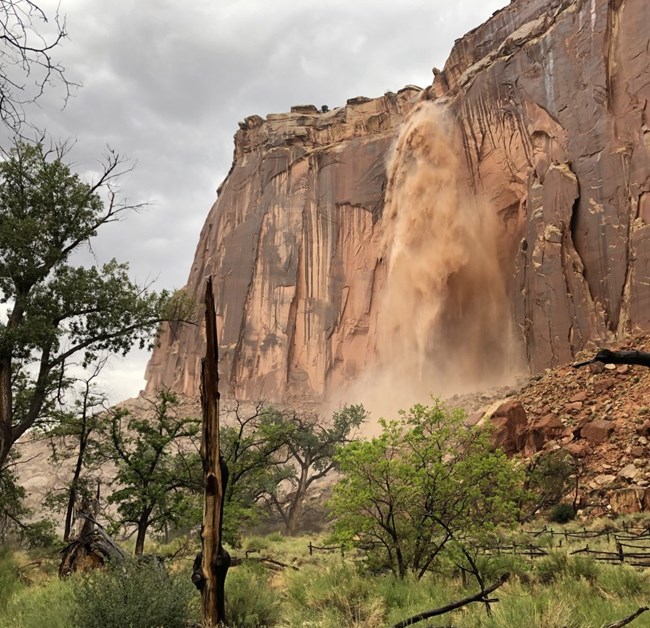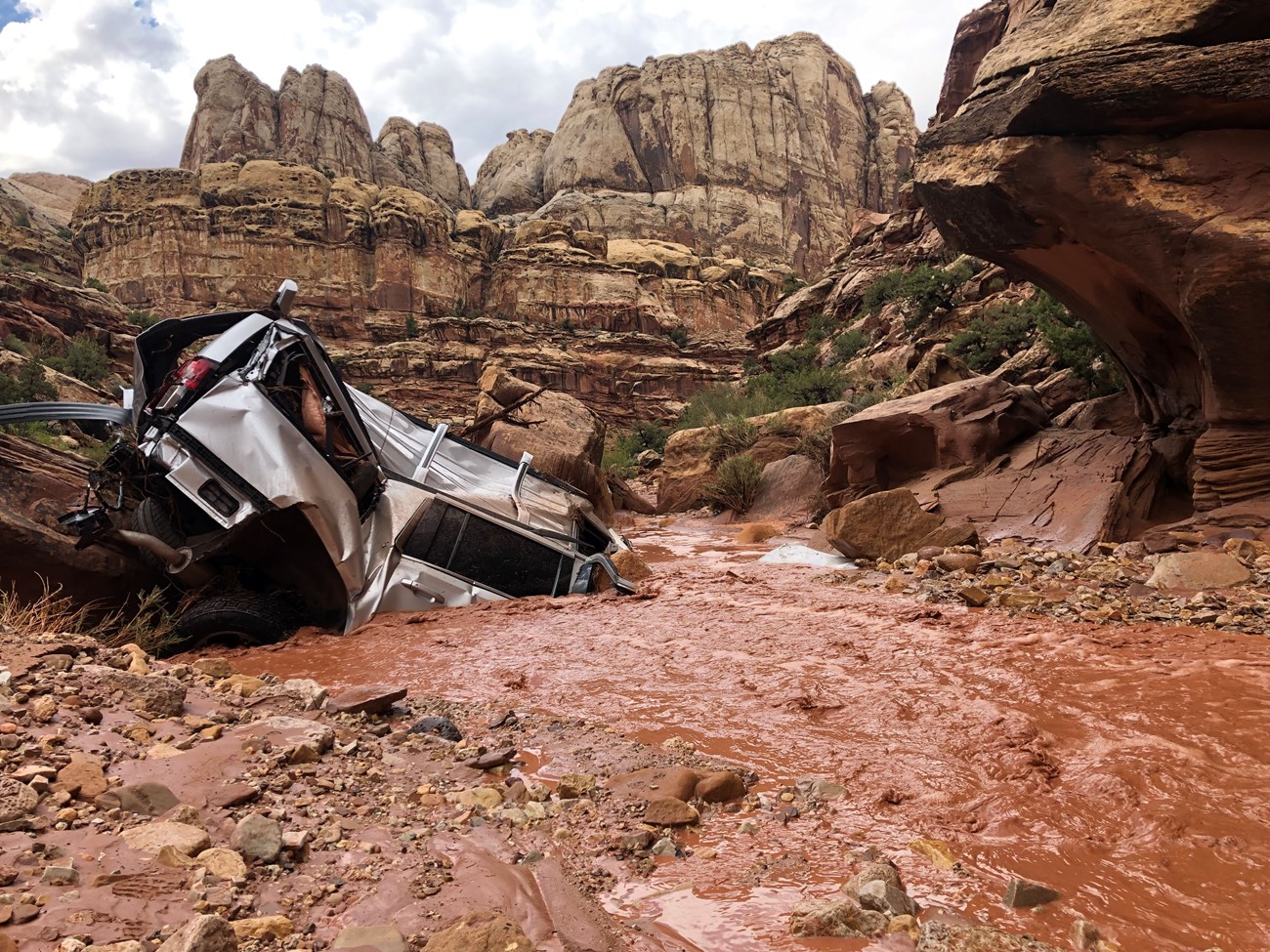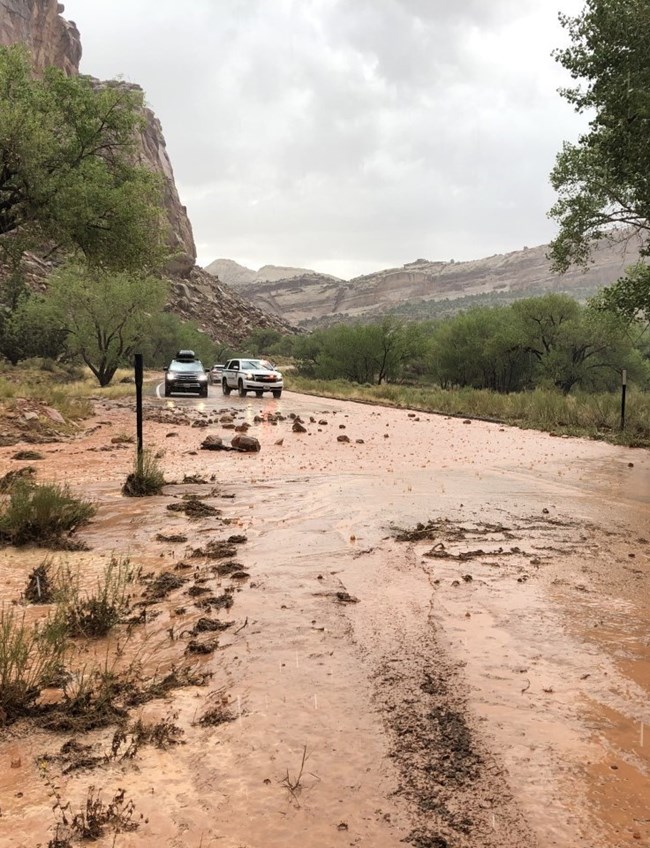
NPS / E. Van Ness Monsoon SeasonFrom mid-June to mid-October, monsoon season brings heavy rain and thunderstorms to the Colorado Plateau. Storms may occur any time of day, but often increase in severity shortly after 12:00 pm, noon. Conditions can change rapidly and cell service is unreliable in most of the park, so check the weather before your visit, or go to the visitor center for current information.Flash FloodsLess than one half inch of rainfall within an hour can cause a flash flood. Bare sandstone and scarce vegetation do little to soak up rain. Instead, muddy waterfalls cascade over the cliffs. Streams and rivers rise suddenly and may flood over their banks. Dry washes can fill with rushing water, several feet deep, carrying large rocks, logs, and debris.
NPS Photo / E. Van Ness For Your SafetyAvoid Dangerous Areas

NPS 
NPS / E. Van Ness Pay Attention to Warning Signs
During a Flash Flood
Visit our keyboard shortcuts docs for details
The awesome power of flash floods and how to remain safe |
Last updated: January 16, 2024
